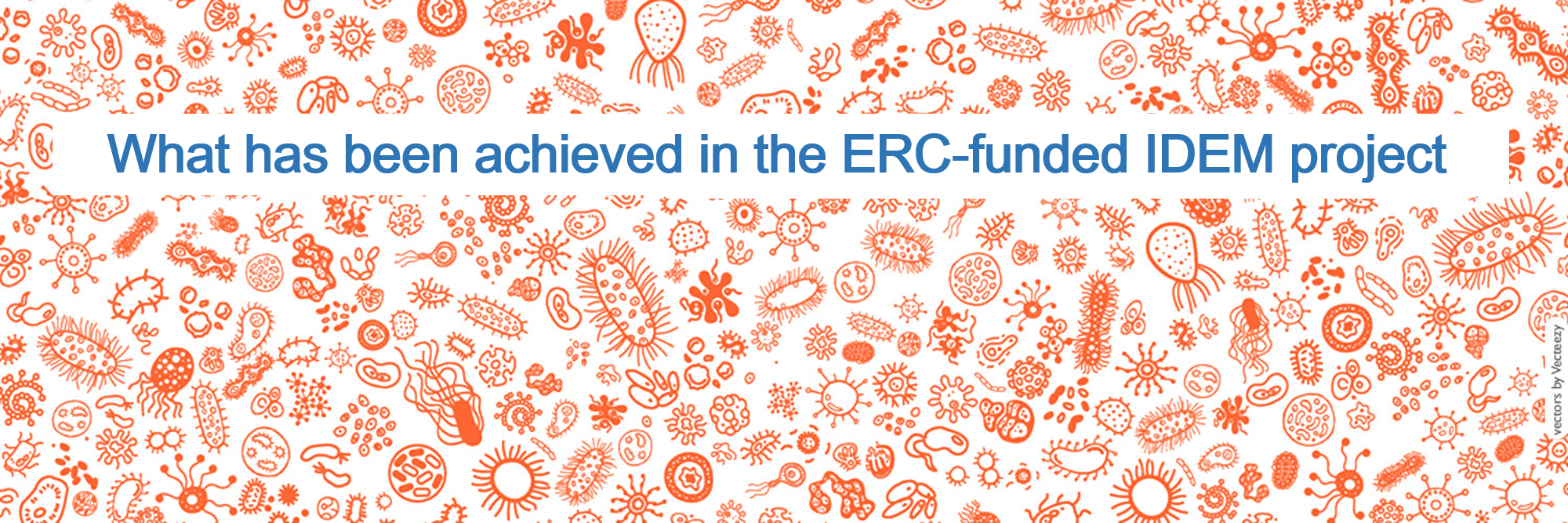
Main outcomes of the project
1. Main scientific results
- We have shown that living things can be seen as individuals, as is usually assumed, but also as communities of heterogeneous entities, including some microbes. From this point of view, then, some microbes are constituents of the organism. The key question is what criterion we use to say that something is part of a living thing (Pradeu, 2016; Ronai et al., 2020).
- We have proposed that one such possible criterion is based on how the immune system interacts with the microbiota (Pradeu, 2019a). Crucially, this immunological crosstalk with the microbiota does not fit the traditional self-nonself framework (Pradeu, 2019b).
- We have shown that immune protection against pathogenic microbes is in many cases co-constructed by the host and some components of the microbiota. So not only are microbes not always harmful, but some of them play essential protective roles in the host’s physiology. To describe this, we proposed the concept of “co-immunity” (Chiu et al., 2017).
- The immune system may, in some contexts, recognize microbial functions rather than microbial structures (Greslehner, 2020a, 2020b).
- We have argued that the role that the microbiota plays in cancer progression and responses to cancer therapies forces us to re-evaluate the traditional concept of “tumor microenvironment”, and to complement it with the concept of “tumor organismal environment” (Laplane et al., 2018, 2019a), namely all the elements of the body that are located far from the tumor but do play a causal role in its growth and control (Rondeau et al., 2019).
2. Institutionally
- over the five years of the project, a total of 9 people worked exclusively or mostly on the project (5 postdoctoral fellows, 2 project managers, and the PI), and 2 have been regular collaborators (one professor of Philosophy of medicine, and one research specialized in neuroimmunology). After their time in our lab, members of the project have been successful in finding positions (2 professors, 1 lecturer, 2 project managers in other projects). Moreover, the ERC IDEM project served as the main basis for the creation of an interdisciplinary team of philosophers and conceptually-inclined biologists and MDs embedded in the immunology lab in Bordeaux, France (CNRS & University of Bordeaux). Philosophers participate in all science seminars and conferences, and write scientific papers in collaboration with scientists. The ERC IDEM project has helped us to launch the “Philosophy in Biology and Medicine” (PhilInBioMed) international network, which gathers 12 institutions and approximately 130 members worldwide, who all share the objective of fostering the dialogue between philosophy, biology, and medicine. PhilInBioMed has been officially labeled an “international research network” (IRN) by the CNRS in 2020.
- In terms of interdisciplinarity: the ERC IDEM project has shown the possibility for philosophers of science, biologists, and MDs to collaborate on cutting-edge microbiota research. The key message is that research on the microbiota is full of conceptual challenges, and that addressing these conceptual challenges can be essential to make further progress at the experimental and medical levels. This, we believe, constitutes an invitation for many scientific labs across the world to host scientifically-informed philosophers on a daily basis. We specifically mentioned the microbiota example and developed the more general idea about the dialogue between philosophy and science in a collective paper published in PNAS (Laplane et al., 2019b), which has reached a large audience.
References
Chiu, L., Bazin, T., Truchetet, M.-E., Schaeverbeke, T., Delhaes, L., and Pradeu, T. (2017). Protective Microbiota: From Localized to Long-Reaching Co-Immunity. Front. Immunol. 8.
Greslehner, G.P. (2020a). Microbiome Structure and Function: A New Framework for Interpreting Data. BioEssays n/a, 1900255.
Greslehner, G.P. (2020b). Not by structures alone: Can the immune system recognize microbial functions? Studies in History and Philosophy of Science Part C: Studies in History and Philosophy of Biological and Biomedical Sciences 101336.
Laplane, L., Duluc, D., Larmonier, N., Pradeu, T., and Bikfalvi, A. (2018). The Multiple Layers of the Tumor Environment. Trends Cancer 4, 802–809.
Laplane, L., Duluc, D., Bikfalvi, A., Larmonier, N., and Pradeu, T. (2019a). Beyond the tumour microenvironment. International Journal of Cancer 145, 2611–2618.
Laplane, L., Mantovani, P., Adolphs, R., Chang, H., Mantovani, A., McFall-Ngai, M., Rovelli, C., Sober, E., and Pradeu, T. (2019b). Why science needs philosophy. PNAS 116, 3948–3952.
Pradeu, T. (2016). Organisms or biological individuals? Combining physiological and evolutionary individuality. Biol Philos 31, 797–817.
Pradeu, T. (2019a). Philosophy of Immunology (Cambridge: Cambridge University Press).
Pradeu, T. (2019b). Immunology and individuality. ELife 8, e47384.
Ronai, I., Greslehner, G.P., Boem, F., Carlisle, J., Stencel, A., Suárez, J., Bayir, S., Bretting, W., Formosinho, J., Guerrero, A.C., et al. (2020). “Microbiota, symbiosis and individuality summer school” meeting report. Microbiome 8, 117.
Rondeau, E., Larmonier, N., Pradeu, T., and Bikfalvi, A. (2019). Philosophy of Biology: Characterizing causality in cancer. ELife 8, 53755.
